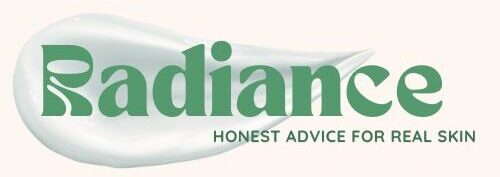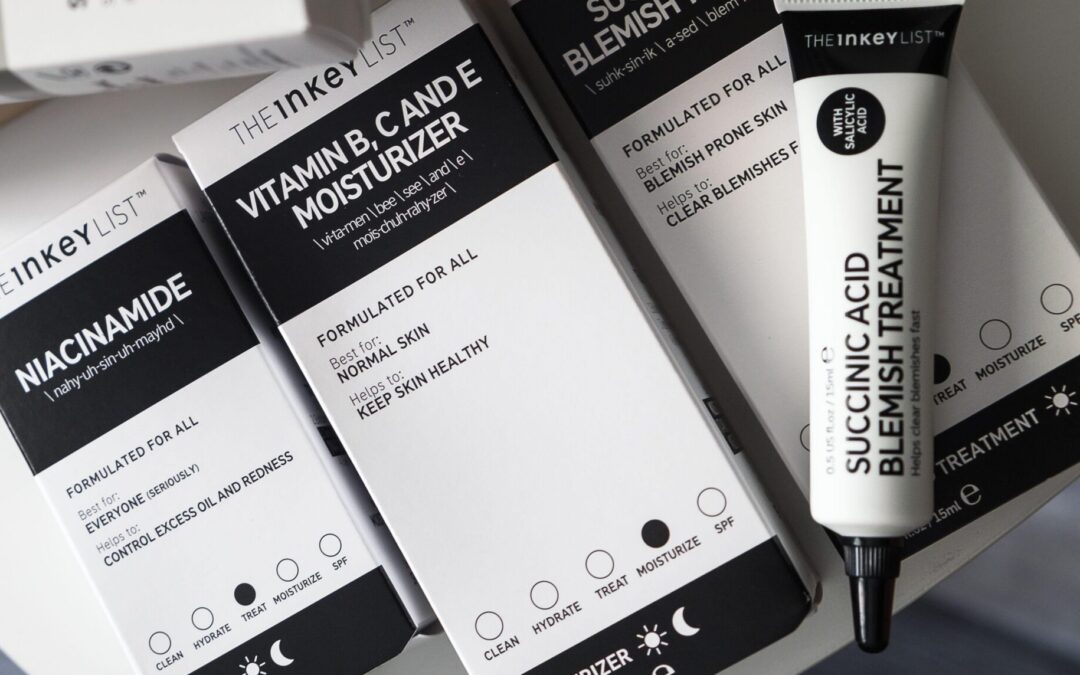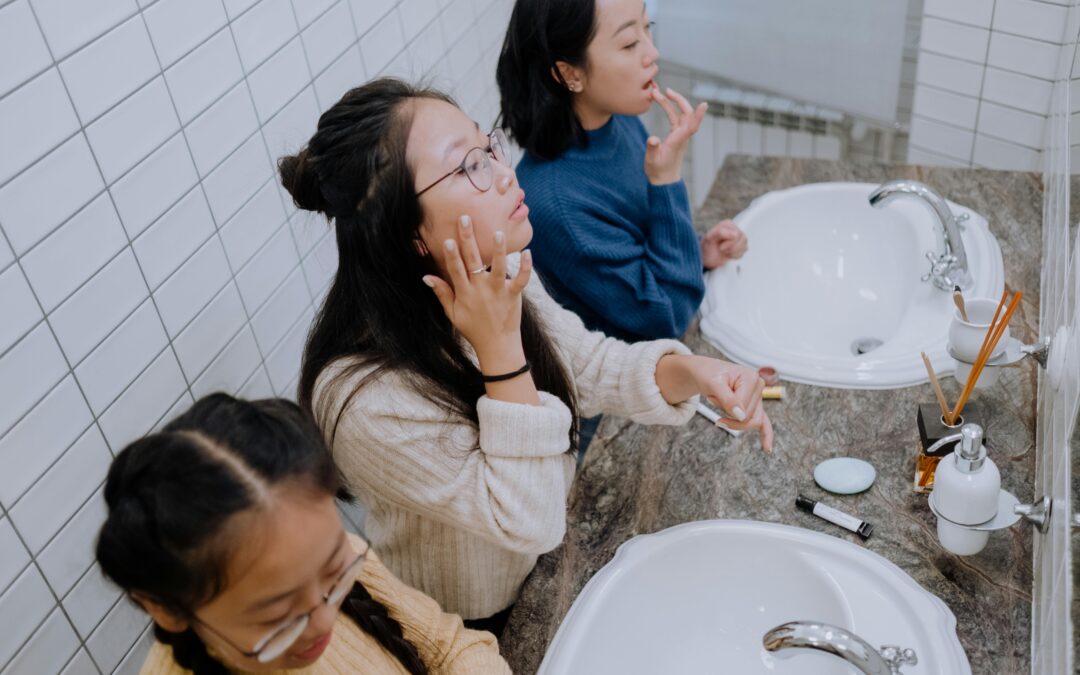Laser hair removal promises smooth, hair-free skin – but for many people of colour, it can lead to stubborn hyperpigmentation. Anna-Louise Adepegba shares her personal journey and, with expert skincare advice from Rao Ayoka, explores how to understand, treat, and protect your skin from this common side effect.
I remember looking in the bathroom mirror disheartedly, as I grazed my fingers gently over my cheeks. The developing dark patches I had been ignoring for weeks, were now too apparent to ignore. They varied in size and shades of brown, some more red than others. I was annoyed. I couldn’t quite work out where they’d come from, or what I’d been doing differently in my skin care to get them.
This was until I remembered – I dropped a bomb of money on a package of laser hair removal sessions around 3 months beforehand. I had been tired of my extensive sideburns and occasional chin hairs – my mum’s genes. Though now I had three problems, still hairy, £280 pounds down, and a new skin issue I had to navigate.
It was after a couple months of denial and research that I accepted the connection was quite clear – the patches lined up with my chosen areas of treatment. Luckily, it is a widely discussed condition, but it meant I had a lot of varying narratives to cipher through online.This article may mean you don’t have to do what I did, and I’ve got someone to help us along the way.
Rao Ayoka, licensed Aesthetician and founder of Ananta Skin Clinic, was passionate about educating people on skincare online without ‘jargon’ when she started her tiktok. She wanted to show it can be ‘simple and affordable’ , which helped me a lot when I was soon met with the annoying realisation that I had Post-Inflammatory Hyperpigmentation (PIH)
Rao was a great help, and she can be for you too once we’ve delved into the details.
Sigh. I’ll tell you now it wasn’t the end of the world, I still have a few light patches left while writing this, and I’m still feeling confident and beautiful in my skin while I heal and accept the unwanted side effects.
Though the key to start healing your skin, and feeling less discouraged , Rao tells us is ‘education’. So Let’s begin.
And why did I, and likely many of you reading, end up with the frustrating side effect after investing so much into your skin?
Read more: What’s that, is that HYPERPIGMENTATION? – Radiance
Hyperpigmentation can show up differently, depending on skin tone, it can appear red, pink, and most commonly brown. Also, it may be bumpy, and patches vary in size. Those with medium and dark skin tones are widely known to be more at risk.
This case of hyperpigmentation is Post Inflammatory Hyperpigmentation, a result of laser technology which essentially damages your hair follicle to work – the ‘skin trauma’. We’ll cover the science behind laser soon.
Although not painful, it can have a great effect on your self image and confidence. After investing in your skin enough to book laser hair removal, the marks feel unfortunate and unfair.
According to LM Skin Centre, doctors estimate that only around 5 – 10% of laser treatment patients develop PIH as a side effect. Although obviously low, it still means one thing, that you’re totally not alone.
Knowing exactly what’s happening with your skin can be a good thing when you begin navigating the healing process.
So what is laser hair removal? And why can it leave some of us with these scars?
Laser hair removal uses concentrated light beams to target the pigment (melanin) in hair follicles. The light is absorbed by the pigment, which heats up and damages the follicle to reduce future hair growth.
But here’s the catch , this technology relies on contrast between your skin tone and hair colour. Invented in the 1960s, Lasers were historically designed with lighter skin tones in mind, which means they can sometimes have trouble distinguishing between melanin in the hair and melanin in the skin. For darker skin, that can increase the risk of burns or pigmentation changes.
That’s where PIH comes in. When the skin experiences irritation, burns, or inflammation from the laser, it can respond by producing more melanin in the affected areas, leading to those stubborn dark marks.
That’s why it’s so important to use the right kind of laser. Some older technologies can be too harsh on darker skin, but there are now lasers specifically designed to be safe for deeper skin tones, like the Nd:YAG laser, which penetrates deeper and bypasses the surface melanin, reducing the risk of burns and hyperpigmentation.
Read more: VIDEO: No, Your Melanin is NOT Enough – Let’s Talk About why SPF is a MUST for Black Skin – Radiance
What can you do now? Tips and advice as you start to heal.
Although I knew I couldn’t go back in time, I thought about what I’d do differently if I ever do decide to get laser again. Firstly, making sure they had technology which’d work for my skin tone. While investing in the treatment was a way of treating my skin for advanced hair removal, it’s important to go to clinics which also value and take your skin into consideration. So, ask questions.
Rao says when getting advice: ‘Seek out those that are aware of the issues that people with skin of colour face’. Think of estheticians and dermatologists like they’re personal trainers for your skin.’
Since Rao is our personal trainer for this article, what does she recommend?
Her favourites are Alpha Arbutin, Hydroquinone, Tranexamic acid. Something that has a cocktail of these, gives you a ‘bang for your buck’. Glutathione and Kojic acid are also great, she says.
A personal recommendation from me would be the Garner Vitamin C Brightening collection. Specifically, the daily serum, which I can credit for the fade in my dark marks.
But in all this, do not forget to lather on your sunscreen.
If you’re considering laser, especially with melanin-rich skin, research is your best friend. Find professionals who understand your skin type, and prioritise aftercare. Hyperpigmentation isn’t rare , and it’s not your fault. I’m still healing, but I know now: the more you understand your skin, the better you can protect it. You’re not alone, and you can reclaim your skin, which is still just as beautiful with the marks.



